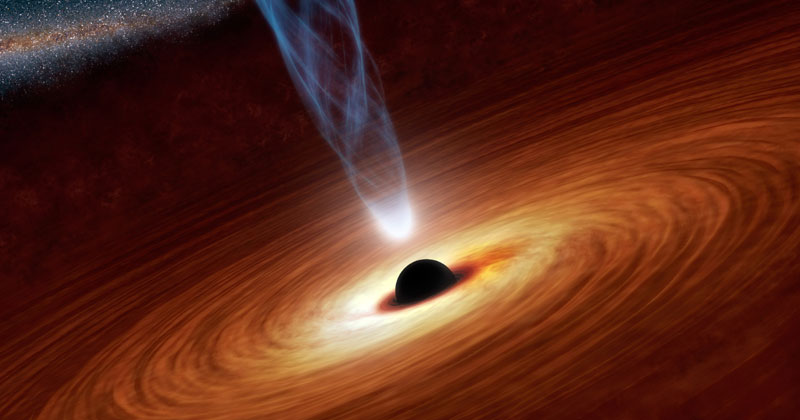Black holes are not new to astronomers. They are simply the final stages of massive stars. However, it is still unclear exactly what these compact celestial star killers look like. But, by detecting gravitational waves, we can predict how are black holes formed.
Black holes have only been known to exist for about 50 years. The existence and working of black holes is an unsolved mystery. A massive star at the end of its life explodes with a bang known as a supernova and knocks off its outer layers. The rest of the star collapses and is pressed together in a tiny space forming a black hole through which even light cannot escape. That is How Are Black Holes Formed.
If this happened to our sun, it would just have a diameter of only 3 km. But our beloved sun has another ending. For a supernova explosion to occur, the star must have a mass of at least eight times the mass of the sun. After spectacularly throwing off its outer layers, a black hole remains, in which the mass of the former star is concentrated in a tiny space.
Black holes can also likely occur when two stars collide and unite their masses. If the mass exceeds a particular value, this new star collapses into a black hole. Then there are supermassive black holes that are millions or even billions of the mass of our sun. Scientists predict that they are at the center of most galaxies.

How are these super huge Black Holes formed, is still unclear even today. One possible explanation is that several black holes once merged, and in the course of their existence, they devoured so much matter from their surroundings that they became so big. It is believed that the presence of a black hole can lead to the formation of a large galaxy.
Mini black holes may soon be created in the laboratory. It isn’t very easy to answer whether there are tiny black holes in the universe because they have not yet been found.
Primordial black holes are still pure theory at the moment. They could have formed shortly after the Big Bang when the matter was still crowded in a confined space. In some places, it was probably so dense that it could create a black hole.
How do we know if a black hole exists?
A black hole is so dense that it does not emit light, and that is the reason we can’t see it. Passing rays of light are deflected from their original path by their enormous gravity. Depending on how close a light beam comes to a black hole, it has very different effects on it.

We can’t see black holes, but we certainly can feel them. The gravitational waves that a small black hole emits are equivalent to around ten solar masses, while a very massive Blackhole has a gravitational pull of a million solar masses. We convert these gravitational waves into sounds, which is a very useful and fun way to present scientific data and also a way of knowing how are black holes formed.
The smaller black hole moves around, the larger black hole at a speed of more than 30,000 kilometers per second. It emits gravitational waves, creating minimal dents in space and time. The faster and denser the smaller black hole circles around the bigger black hole, the more intense the gravitational waves are emitted. The smaller companion loses more and more energy and finally falls into the central black hole.
In real-time, the smaller black hole takes about a year to plunge into the bigger black hole from a distance of four million kilometers. The question remains whether the black holes in the centers of galaxies are as Einstein’s theory of relativity describes them. We can detect how the frequencies change as the smaller body orbits around the central object. If there is a black hole, these frequencies form a particular pattern as the spiraling black hole makes a very specific sound.

There is a black hole in the center of the galaxy NGC 4438
There is probably a black hole in the center of our Milky Way and many other galaxies, but that is not yet certain. Black holes can never be seen directly in telescopes, but the type of gravitational waves emitted by black holes reveals a great deal about the structure of the objects involved. Unfortunately, the extremely weak gravitational waves can only be detected in very elaborately designed detectors like GEO600.
We know how black holes are formed, and we also know how to detect them. Black holes are usually seen as objects of destruction, but in reality, they are crucial for the formation and maintenance of galaxies.


